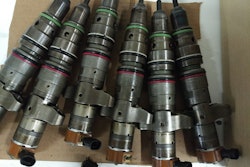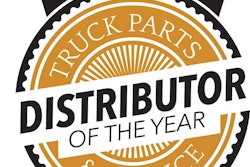By David Seewack, founder and CEO, FinditParts
I recently attended a truck parts conference, and everyone there was buzzing about e-commerce.
For something that plays such a significant role in our daily lives, the idea of shopping online was a pretty controversial topic. The speakers’ general response to questions about e-commerce was, “Look, don’t worry. e-commerce is something to think about. But you guys don’t have to worry about it, because you have tradesmen behind the counter who offer that irreplaceable personal touch to the customer.”
I was dumbfounded.
Long term, that strategy isn’t going to cut it.
Especially in industries like ours (still ripe for disruption), e-commerce isn’t just “something to think about.” It’s not a luxury or a “nice thing to have.” It’s a fundamental part of the way we do business in today’s world, and it’s something that needs to be prioritized. Right now. Because today, people want to be able to buy whatever they need on their phone or computer — and truck parts are no different.
The fact that our industry still operates with such an old-school mentality is the primary reason why I started FinditParts, the largest e-commerce player in truck parts. I know I’m not the only founder thinking in this direction. Every day, entrepreneurs step into industries that have been slow to adjust. And every day we see some new company build a technology-based solution that seems obvious on the surface — but never occurred to the “industry leaders” who are accustomed to the way things have always been done.
When we built our website from the ground up five years ago (man, that thing was clunky in retrospect), we were an industry pioneer.
Buying truck parts online? It was unheard of. And a lot of people in this old-school industry predicted it would stay that way forever.
Even as online shopping boomed, people figured that consumers would always buy truck parts at brick-and-mortar shops or go direct to the dealer.
Shortly after launching our website, I approached an executive from a national auto parts chain with the hopes of becoming an e-commerce partner. He shot me down. Essentially, he said, “E-commerce isn’t going to work in this industry. Why would anyone buy an auto part online when there’s a NAPA, AutoZone, O’Reilly’s, or Advance Auto Parts less than a mile away?”
I was shocked.
If I were speaking to a salesman or a store manager, I could see that being their perspective. But coming from an executive at one of the country’s biggest auto parts retailers, it was eye-opening. I tried explaining to him that purchasing habits were changing, and no industry would be excluded from the e-commerce shift.
If I had the chance to sit down with him again, I’d use this argument: People used to say they would never buy shoes online. They worried about the shoes not fitting, or receiving a pair of Nikes when they ordered Adidas. But eventually, people realized returning shoes is easy, and the latter doesn’t really happen. Now, pretty much everyone orders shoes online.
People are coming around in the truck parts industry, too. We’re changing buyer behavior.
The problem is that while consumers are more willing to shop for truck parts online, many suppliers and manufacturers aren’t so keen on selling online. Of course, I understand and respect (to a degree) this industry’s inherently old-school approach. And I know there are various reasons — many of them reasonable — as to why many are hesitant to adopt newer technologies. But at the same time, I wish more people in the truck parts industry realized how e-commerce can benefit them and their consumers.
E-commerce is good for everyone: consumers, suppliers, and manufacturers.
The consumer advantages are numerous. To name a few:
- More selection. A physical location can’t compete with the massive supply of a retail website.
- “Personal touch” isn’t lost when shopping online. When the information on the website doesn’t answer your question, a technical service person ready to help is a phone call away.
- An accelerated timeline and shipping tracking. Consumers get the parts more quickly and don’t have to deal with the uncertainty and unreliable timeline of a special parts order from a wholesale distributor or dealer.
- 24/7 access. When you’re burning the midnight oil working on your truck late at night and realize you need a part, you can order it right then and there.
- The personal preferences and biases of a salesperson aren’t factored into the customer’s purchasing decisions.
- Global access. And multiple languages to support customers far and wide.
And as for the suppliers and manufacturers:
- The convenience of Amazon without the pitfalls. In fact, I like to call our approach “anti-Amazon,” because we work collaboratively with suppliers, we don’t demand control of the entire market, and we don’t adversely affect their existing distribution.
- The manufacturer doesn’t need a salesperson to inform consumers about a product. There’s more info on a website than a senior salesperson could ever accrue in their career.
- Brands can gain exposure. More brands get in front of more eyeballs.
- Not to mention the advantages of a parts website over a parts catalog, which is a benefit to both the consumer and suppliers and manufacturers, are many:
- Product listings can be updated or added anytime. This is much more efficient and timely than having to wait for the next catalog to be published.
- On the same note, catalog product prices and listings aren’t always up-to-date. I’ve seen salesmen lugging around grease-stained catalogs that were several years old.
- Locating a product is infinitely easier. Typing into a search bar is a bit more efficient than flipping through dozens of pages featuring products from hundreds of suppliers — or calling multiple suppliers, only to find that the part you need is out of stock.
For these reasons, people in this industry are finally realizing their concerns and unwillingness to embrace e-commerce are largely unfounded. Those still resisting the tides of the digital age will eventually be forced to adapt or forced out, like in all industries. Of course, we all know people are doing more and more shopping online. And we should certainly expect that trend to continue.
As a final note, I want to mention that I’m a truck parts guy who entered the online business, not a tech guy who decided to enter the truck parts business. Before moving into e-commerce, I grew a truck parts distribution company from a single location to the largest supplier in the Western U.S., with more than 23 branches.
I’ve seen the past and present of truck parts distribution. And even though this next step is as “out of my comfort zone” as it would be for anyone else in this industry, the one thing I’m sure of this: e-commerce is the future.
David Seewack began his career in 1981 at Associated Truck Parts, a brick and mortar parts supplier in Gardena, Calif. He sold the business in 1999 and in 2011 founded FinditParts.com, the leading online retailer of heavy-duty truck, trailer and tractor parts. FinditParts sells from a catalog of over four million parts online to more than 150 countries and represents over 800 manufacturers in the marketplace.










